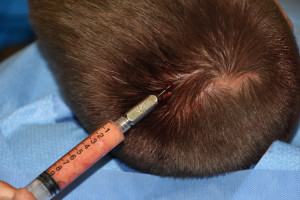Tightness and pain after scalp surgery is fairly uncommon. The scalp can become tight after a variety of procedures for aesthetic and reconstructive surgery. Usually these procedures have one thing in common…closure of a scalp wound after tissue loss. The tissue loss may be from removal of a benign or malignant tumor or for a graft harvest for hair transplantation for example. Regardless of the cause, scalp tissues are mobilized and stretched to provide coverage of the defect.
Scalp tightness is hard to treat since there is no way to add tissue. While mobilization and release of the affected scalp tissue may seem like it would work, by itself it just creates as much scar tissue as it releases.
The addition of tissue is the apparent solution to chronic scalp tightness and pain. This is best done through the use of injectable fat grafting. Fat grafts adds new healthy cells and helps create some tissue expansion through its volumetric effect. By stretching the tissues and introducing a variety of soft tissue cells, including stem cells, the fibrotic tissue condition can be improved.

Fat injections for chronic scalp pain, tightness or other pathologic conditions should be considered to improve the quality of the scalp tissues. It may require multiple fat injections but almost always the scalp can be made more supple.
Dr. Barry Eppley
Indianapolis, Indiana



